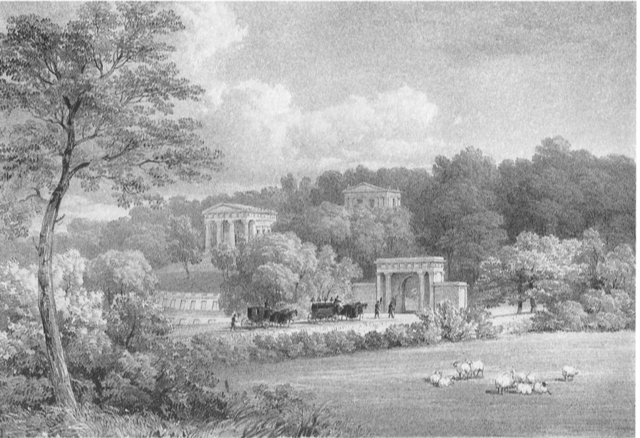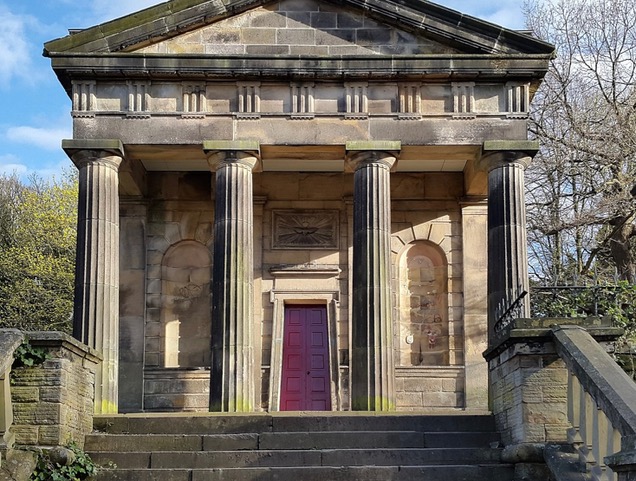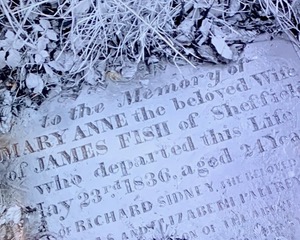Jo Meredith’s talk was a real eye-opener for many Probus members who had never set foot in the Sheffield General Cemetery. Jo was a town planner and landscape architect in local government and subsequently ran her own bookshop in Gloucester before selling up and becoming a tour guide. She has been a volunteer at the General Cemetery for the past 12 years.
It was the main cemetery in Sheffield with over 87,000 burials, opening in 1836 on then rural land bought from James Wilson (Snuff Mill in Sharrow). It finally closed for burials in 1978. Grade II* listed, the cemetery is now owned by Sheffield City Council and managed by the Sheffield General Cemetery Trust.
It’s rare these days to find a Victorian cemetery with its full complement of intact buildings. It was one of the first commercial landscape cemeteries to be developed in the UK, opening as a nonconformist cemetery in response to the rapid growth of the city, the poor state of the town’s Anglican churchyards and massive expansion of the nonconformist movement. It started as a commercial enterprise by nonconformist entrepreneurs who met in the Cutlers Hall in 1834.
The new company sold plots, organised burials and ran a masons’ yard. The building contract was won by the local Sheffield architect Samuel Worth and the project was completed by May 1836. It has Greek Doric and Egyptian style buildings. Robert Marnock, who designed Sheffield Botanical Gardens and Weston Park, was appointed landscape consultant.
The cemetery was built on a steep slope. There were four big retaining walls traversing the hillside from top to bottom, the lowest forming two rows of catacombs. Never commercially successful, only 10 bodies were laid to rest in the first 10 years after construction. A winding drive up the hillside allowed the hearse to reach the chapel from the Gatehouse.
Notables were commemorated by impressive monuments, some Grade II listed, within the original nonconformist section including John, Thomas, and Skelton Cole (Cole Brothers), Mark Firth (steel), George Bassett (liquorice), William Parker (cutlery exporter), James Nicolson (industrialist), William Flockton (architect), and John Gunson (chief engineer of the Sheffield Water Company when Dale Dyke Dam burst in 1864, causing the great Sheffield flood) and 77 of the flood’s victims. A statue, and the remains of James Montgomery (poet and hymn writer), were moved to Sheffield cathedral in 1971 when the cemetery had fallen into disrepair.
Burial records in the city archive give an interesting insight into social deprivation, poverty, infant mortality and poor health in early- and mid-Victorian industrial Sheffield. Mary Ann Fish with consumption (TB) was the first to be buried in 1836. Subsequently more than half were buried in pauper graves paid for by the local authority. For instance nonconformist grave B27 was a communal grave filled gradually over 18 months. There were many youngsters, babies and workhouse inmates.
The cemetery company began to lose money and extended the cemetery to include consecrated land, building a new neogothic Anglican chapel approached from the top end on Cemetery Road. The chapel was designed by William Flockton and further landscaped by Robert Marnock. The Dissenters’ Wall separating nonconformist and Anglican sections still exists, the latter far more profitable with its more numerous, smaller, linear graves.
In the 1900s labour costs rose, WWI depleted the workforce and cremations were preferred to burials. Retaining walls deteriorated, monuments were in disrepair and collapsing. WWII caused bomb damage. The cemetery was a complete wreck with undesirables on the loose.
A shortage of recreational space in Sharrow Vale was addressed by the city council designating the area for heritage purposes. The Anglican side was cleared for parkland and each grave recorded in the city archive. The nonconformist Victorian part and its original buildings were earmarked for restoration, due for completion in March 2023.
The Sheffield General Cemetery Trust manages the cemetery. With the help of a grant of £500,000 from the Heritage Lottery Fund and other fund-raising efforts, there is now a café in the restored chapel. The Trust organises film nights, parties and gigs and welcomes private hire. A research team looks into family history. The gatehouse is a new Airb&b!
A substantial wall with gates locked at night surrounds the cemetery. This was built to deter Victorian grave robbers. It was only a few minutes away from Ovenden’s anatomy dissection room at his Church Street home. The resurrectionists made a lot of money!



